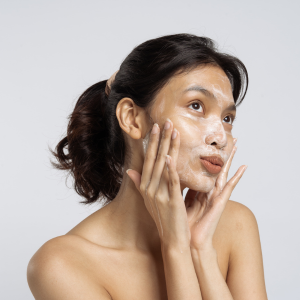
Acne is one of the most common skin conditions, affecting people of all ages. Whether it’s occasional breakouts or persistent acne, treating it effectively requires a combination of skincare, lifestyle changes, and, in some cases, medical intervention. This guide provides simple and effective steps to help you quickly relieve acne and maintain clear skin.
Isotretinoin 20mg is a powerful acne treatment available online at DosePharmacy. It helps reduce severe acne by controlling oil production. Consult a doctor before use to ensure safety and effectiveness.
Understanding Acne: Causes and Types
Before treating acne, it’s important to understand what causes it. Acne occurs when hair follicles become clogged with oil (sebum) and dead skin cells. The main factors that contribute to acne include:
-
Excess oil production – Overactive sebaceous glands produce too much oil.
-
Clogged pores – Dead skin cells and oil block pores, leading to breakouts.
-
Bacteria – The bacteria Propionibacterium acnes can multiply in clogged pores, causing inflammation.
-
Hormonal changes – Fluctuations in hormones, especially during puberty, menstruation, or pregnancy, can trigger acne.
-
Diet and lifestyle – Certain foods, stress, and poor skincare habits may contribute to acne.
Common Types of Acne
-
Blackheads and Whiteheads (Comedones) – Clogged pores that appear as black or white spots.
-
Papules and Pustules – Inflamed red bumps, sometimes filled with pus.
-
Nodules and Cysts – Deep, painful lumps can cause scarring under the skin.
Step 1: Establish a Proper Skincare Routine
A good skincare routine is the foundation of acne treatment. Here’s what you should do:
1. Cleanse Gently but Thoroughly
-
Wash your face twice daily using a mild, non-comedogenic cleanser.
-
Avoid harsh soaps or scrubs that can irritate the skin and worsen acne.
-
Consider cleansers with salicylic acid or benzoyl peroxide to help reduce breakouts.
2. Use an Acne Treatment Product
-
Benzoyl peroxide – Kills acne-causing bacteria and reduces inflammation.
-
Salicylic acid – Helps unclog pores and remove dead skin cells.
-
Retinoids – Prevent clogged pores and improve skin turnover.
-
Tea tree oil – A natural antibacterial alternative.
3. Moisturize Daily
-
Even if you have oily skin, use a lightweight, oil-free moisturizer to maintain hydration.
-
Look for ingredients like hyaluronic acid and glycerin.
4. Apply Sunscreen
-
Use a broad-spectrum SPF 30+ sunscreen daily to prevent sun damage and dark spots.
-
Choose a non-comedogenic formula to avoid clogged pores.
Step 2: Make Lifestyle Adjustments
Your daily habits can influence your skin health. Here are key lifestyle changes for faster acne relief:
1. Eat a Healthy Diet
-
Reduce intake of high-glycemic foods like sugar, white bread, and processed snacks.
-
Increase consumption of fruits, vegetables, whole grains, and lean proteins.
-
Include foods rich in omega-3 fatty acids (salmon, walnuts), zinc (pumpkin seeds), and antioxidants.
2. Stay Hydrated
-
Drink at least 8 glasses of water daily to flush out toxins and keep skin hydrated.
3. Reduce Stress
-
High-stress levels can trigger hormonal changes that worsen acne.
-
Practice meditation, yoga, deep breathing, or regular exercise to manage stress effectively.
4. Get Enough Sleep
-
Aim for 7-9 hours of sleep per night to allow your skin to heal and regenerate.
Step 3: Avoid Common Acne Triggers
Certain habits can worsen acne. Here’s what to avoid:
1. Don’t Pick or Squeeze Pimples
-
Picking acne can lead to scarring and bacterial spread.
-
Instead, use a spot treatment with benzoyl peroxide or sulfur.
2. Avoid Heavy Makeup and Skincare Products
-
Use non-comedogenic and oil-free makeup.
-
Remove makeup thoroughly before bed using a gentle cleanser or micellar water.
3. Change Pillowcases and Towels Regularly
-
Pillowcases collect oil and bacteria, so change them at least twice a week.
-
Use a clean towel for your face to prevent reintroducing bacteria.
Step 4: Try Natural and Home Remedies
If you prefer natural treatments, some home remedies can provide relief:
1. Honey and Cinnamon Mask
-
Mix 1 tablespoon of honey with ½ teaspoon of cinnamon and apply for 10 minutes before rinsing.
-
Honey has antibacterial properties, while cinnamon reduces inflammation.
2. Green Tea Extract
-
Green tea has antioxidants that help reduce inflammation and bacteria.
-
Apply cooled green tea with a cotton ball or use products containing green tea extract.
3. Aloe Vera Gel
-
Aloe vera has soothing and anti-inflammatory effects.
-
Apply pure aloe gel to reduce redness and irritation.
Step 5: Seek Medical Treatment for Severe Acne
If over-the-counter treatments and home remedies don’t work, consult a dermatologist. Medical treatments include:
1. Prescription Topical Treatments
-
Stronger retinoids (Tretinoin, Adapalene) to unclog pores.
-
Antibiotics (Clindamycin, Erythromycin) to reduce bacteria and inflammation.
2. Oral Medications
-
Antibiotics (Doxycycline, Minocycline) for moderate to severe acne.
-
Hormonal treatments (Birth control pills, Spironolactone) for hormonal acne.
-
Isotretinoin (Accutane) for severe, cystic acne that doesn’t respond to other treatments.
3. In-Office Procedures
-
Chemical peels – help exfoliate and unclog pores.
-
Laser therapy – Targets bacteria and reduces inflammation.
-
Cortisone injections – Reduce swelling in severe acne cases.
Conclusion
Treating acne requires patience and a combination of good skincare, lifestyle changes, and, if necessary, medical treatment. By following these steps, you can reduce breakouts and achieve clearer skin. If acne persists or worsens, consult a dermatologist for personalized treatment. Stick to a routine, stay consistent, and remember that improvement takes time. With the right approach, you can achieve fast relief and maintain healthy skin.





Leave a Reply